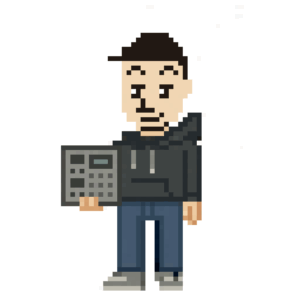Your cart is currently empty!
Mastering the Art of Cropping in Beatmaking: Techniques and Tips for Enhanced Music Production

In the world of music production, the art of beatmaking is a crucial skill that can make or break a song. As technology advances, so do the tools and techniques available to music producers. One such tool is the crop function, which is an essential aspect of editing and manipulating audio samples in modern beatmaking. By understanding and effectively utilizing the crop feature, you can take your beats to the next level, adding precision, creativity, and a unique touch to your music. In this article, we will explore the importance of the crop function, how to use it in various digital audio workstations (DAWs), and creative techniques to enhance your beats.
Table of Contents
The Importance of Crop in Beatmaking
Beatmaking revolves around the use of samples, which are audio snippets taken from various sources such as records, movies, or other digital media. These samples can be manipulated to create entirely new sounds, rhythms, and melodies. The crop function is a fundamental tool in the beatmaker’s toolkit, as it enables precise editing and trimming of audio samples to fit the desired beat structure.
Using the crop tool effectively can help you achieve several things:
- Remove unwanted noises or artifacts from samples: This ensures that your beats have a clean and professional sound, free of any distractions or imperfections.
- Tighten up timing: By cropping samples accurately, you can ensure that the timing of your beats is spot-on, giving your music a polished and cohesive feel.
- Optimize sample usage: Cropping allows you to use only the essential parts of a sample, reducing the overall file size and conserving your computer’s processing power.
- Experiment with creative techniques: The crop function can be used in innovative ways to create new textures, patterns, and rhythms, expanding the possibilities of your music production.
How to Use Crop in Different DAWs
Each DAW has its way of handling the crop function, but the core principles remain the same. Here, we will discuss how to use the crop tool in three popular DAWs: Ableton Live, FL Studio, and Logic Pro.
Ableton Live
In Ableton Live, cropping is an easy and straightforward process. Follow these steps to crop a sample:
- Import your sample: Drag and drop your audio file into an empty audio track in the Arrangement View or Session View.
- Select the desired part: Click and drag within the audio waveform to highlight the section you want to crop.
- Crop the sample: Right-click (or Ctrl-click on Mac) on the highlighted area and select “Crop Sample” from the context menu. This will remove any unwanted parts of the audio file, leaving only the selected section.
FL Studio
FL Studio’s crop tool is called “Edison,” and it’s a powerful audio editor integrated into the DAW. Here’s how to crop a sample using Edison:
- Import your sample: Drag and drop your audio file onto the playlist or an empty channel in the Channel Rack.
- Open Edison: Click the “wrench” icon on the sample’s channel settings window and select “Edit in audio editor” or press Ctrl+E. This will open the Edison audio editor.
- Select the desired part: Click and drag within the audio waveform to highlight the section you want to crop.
- Crop the sample: Click the “scissors” icon on the toolbar, and then click “Trim” from the menu that appears. This will remove any unwanted parts of the audio file, leaving only the selected section.
Logic Pro
Cropping in Logic Pro can be done in the main arrange window or within the Audio File Editor. Here’s how to crop a sample in the arrange window:
- Import your sample: Drag and drop your audio file onto an empty audio track in the main arrange window.
- Select the desired part: Click and drag within the audio waveform to highlight the section you want to crop.
- Crop the sample: Press Ctrl+T (or Command+T on Mac) to split the audio region at the selected boundaries. Delete the unwanted parts of the audio file by selecting them and pressing the Delete key.
If you prefer using the Audio File Editor, follow these steps:
- Import your sample: Drag and drop your audio file onto an empty audio track in the main arrange window.
- Open the Audio File Editor: Double-click the audio region to open the Audio File Editor.
- Select the desired part: Click and drag within the audio waveform to highlight the section you want to crop.
- Crop the sample: Click the “Trim” button in the Audio File Editor toolbar. This will remove any unwanted parts of the audio file, leaving only the selected section.
Creative Techniques for Using Crop in Beatmaking
The crop function is not only for trimming and cleaning up samples but can also be used to experiment with new creative techniques. Here are some ideas to get you started:
- Reverse samples: After cropping a specific part of a sample, try reversing it to create unique and interesting textures. This technique can be used for drum hits, melodic elements, or even entire loops.
- Chopped and screwed: Popularized by DJ Screw, this technique involves cropping a sample into small pieces and rearranging them in a slowed-down tempo, giving your beat a trippy, laid-back vibe.
- Stutter effect: Crop a very short part of a sample (such as a single drum hit or a vocal phrase) and repeat it multiple times in quick succession. This creates a stutter or glitch effect that can add energy and excitement to your beats.
- Layering: By cropping different parts of multiple samples and layering them together, you can create entirely new sounds and textures. This technique is often used with drum hits, but it can also be applied to melodic or harmonic elements.
- Time-stretching: Crop a section of a sample and use your DAW’s time-stretching feature to manipulate its length, pitch, or tempo. This can result in unique and experimental sounds that add depth and character to your beats.
Conclusion
The crop function is a versatile and powerful tool that every beatmaker should master. By understanding its importance and learning how to use it effectively in various DAWs, you can elevate your beatmaking skills and unlock new creative possibilities. Experimenting with different techniques and approaches will help you develop your unique style and set your beats apart from the rest. Embrace the power of the crop tool and take your beatmaking to new heights.
About The Author

Born in 1982 in Japan, he is a Japanese beatmaker and music producer who produces experimental hiphop beats. He is the owner of Genx Records. Because he grew up internationally, he understands English. His hobbies are muscle training, artwork creation, website customization, and web3. He also loves Korea.
Website: genxrecords.xyz
Share This Post:
Leave a Reply